 |
 |
 |
 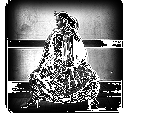 |
 "I make dances for places; I define place not only as it refers to location and physical structures but as an expression of accumulated experiences and social response; I investigate the evidence of history in architecture, natural systems and social behaviors. I am interested in how we affix meaning to place. What role does memory play? How do places influence the way we perceive information/ideas?"
"I make dances for places; I define place not only as it refers to location and physical structures but as an expression of accumulated experiences and social response; I investigate the evidence of history in architecture, natural systems and social behaviors. I am interested in how we affix meaning to place. What role does memory play? How do places influence the way we perceive information/ideas?" |
For the past seventeen years, Haigood has been making dances that use environments as a point of departure for movement and narrative. A 10 ton bridge crane, a 500 gallon water tank, a 110 foot clock tower, 7 working bee hives, as well as a series of abandoned factories and community gardens have all become occasions for her investigation. Generating site-specific movement vocabularies, she frequently utilizes sophisticated rigging systems which enable aerial flight and suspension. In addition to creating solo dances as well as pieces for ZACCHO, her company, Haigood collaborates with sculptors, composers and rigging masters. Photo: Suzanne Parker ^ |

 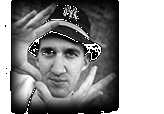 |
 "I try to make powerful, challenging, entertaining and uncomfortable theater for the masses, using the multiculture and powerful oral languages of my community as a world lens on police brutality, class, race, power, powerlessness, violence, incarceration and cats."
"I try to make powerful, challenging, entertaining and uncomfortable theater for the masses, using the multiculture and powerful oral languages of my community as a world lens on police brutality, class, race, power, powerlessness, violence, incarceration and cats." |
| Danny Hoch was a rapper, breakdancer, graffiti artist, drug dealer, street mime and magician by the time of his Bar Mitzvah. At the age of 19 he was a full-time faculty member at NYU bringing high-conflict, high-impact, volatile interactive improvisational theatre into detention centers, alternative high schools and jails. Neither tape recording nor interviewing "real people" for his solo work, writer Hoch transforms the vernacular of the streets -- the voices in his head -- into humane, edgy, three dimensional characters. An articulate and visceral performer, he volcanically deploys subtle, entertaining, incisive critique.
Photo: Paula Court |
| "I'm comin' with the ill-type flow, from my linguistic Theatrical ballistic, twisted, freshly-dipped shit When you see me on stage, you think I'ma pull a heater, But I pull Boricuas and Jews, inside the same theater The Jamaican crew, Bronx Blacks, Italians too, Florida, Chicago, Oklahoma, and even you Tired of seein' my generation and my 'hood on the periphery, I bring to center-stage-- what?! ...My whole community My monological cord comes with mad extensions Bringin' you the real in three full dimensions I got my multi-lingual, multicultural, urban perspective This Hip-Hop-Salsa-Reggae-Bar-Mitzvah-style, it's infective And my invective-Dialectical, alphabetical, a spectacle, flippin' lingo I make theater so tasty your grandmother be givin' up her bingo..." ^ |

 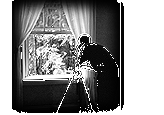 |
 "In all work I wish to develop experiences which engage the viewer actively. I have always thought that the viewer walks in and performs the work, although I don't think of it as particularly theatrical. The work is there to make the viewer more present."
"In all work I wish to develop experiences which engage the viewer actively. I have always thought that the viewer walks in and performs the work, although I don't think of it as particularly theatrical. The work is there to make the viewer more present." |
In the Bedroom of Emily Dickinson, 1995 While the visual aspects of Roni Horn's work vary greatly, the conceptual underpinnings and experiences they seek to manifest strongly cohere. Via drawing, sculpture, photography and installation, the work explores self-identity through its relation to language, context and space in the world. In 1990, Horn began the on-going work, To Place, a series of books that function as a kind of encyclopedia. Based on more than two decades of voyages to Iceland, each volume alters the meaning of the previous ones as well as enlarging their context. At once a conceptual artist, expressionist and minimalist, Horn fluidly moves between the visual and the linguistic. Marrying lucid, spartan language and cool, elegant form, the Horn oeuvre consistently foregrounds engagement over conclusion. Photo: M.McGill ^ |

 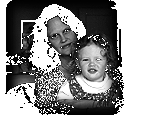 |
 "I'm fascinated by the conflict between the document and the documented, fiction and representation, the frailty, power and elusiveness of relationships and sentiment, and the absurd authenticity of being alive. These issues have haunted all of my work as it has moved between experimental narratives and more traditional documentary forms. Since the birth of my daughter I'm once again compelled by tragic/comic narratives. I find that the craft of story-telling through image, text, sound and silence is most riveting when the expectation of the narrative collides with form, creating a unique moment for reflection, rage or mystery."
"I'm fascinated by the conflict between the document and the documented, fiction and representation, the frailty, power and elusiveness of relationships and sentiment, and the absurd authenticity of being alive. These issues have haunted all of my work as it has moved between experimental narratives and more traditional documentary forms. Since the birth of my daughter I'm once again compelled by tragic/comic narratives. I find that the craft of story-telling through image, text, sound and silence is most riveting when the expectation of the narrative collides with form, creating a unique moment for reflection, rage or mystery." |
| Re-thinking the documentary through an experimental aesthetic, media artist Jeanne C. Finley rigorously sandwiches evocative visual imagery and lively debate. From her earliest tiny sardonic tales, to her reconstructions of educational film footage from the '50's, and her latest full-length triptych, she consistently and poetically illuminates the tension between personal experience and the social and cultural conditions that both shape and defy identity. Whether she's working with document or fantasy, in single channel video, radio programs, web site or installation, Finley most wittily critiques the roots of power.
Photo: Hebe Shafer ^ |

 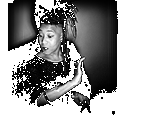 |
 "I feel that my job as an artist is not so much to put forth a particular message, but to encourage a kind of curiosity about, and examination of, human nature and of life itself. I think experimental artists are like scientists: both tend to be more interested in the process of discovery than with arriving at a specific result. And both often do work that may appear to be limited in scope, but in the end often has far-reaching and profound effects on humanity as a whole."
"I feel that my job as an artist is not so much to put forth a particular message, but to encourage a kind of curiosity about, and examination of, human nature and of life itself. I think experimental artists are like scientists: both tend to be more interested in the process of discovery than with arriving at a specific result. And both often do work that may appear to be limited in scope, but in the end often has far-reaching and profound effects on humanity as a whole." |
| Working with voice, live electronic processing, found objects, and sampling technology, Pamela Z creates live solo performance pieces and makes scores for dance, film/video and radio. Whether she is using found texts, city sounds or collaging layers of sampled vocal material in an imaginary language, the work plays with repetition, out-of-phase rhythms and gradually changing textures. Most of her pieces are short, five to eight minute works or larger modular compositions consisting of short movements with segues. Particularly interested in timbre and texture, Pamela Z views her voice and rack of digital processors to be her chief instrument. A charismatic performer, during live events she favors sounds created or triggered in real time and often manipulates the sound with physical gestures via The BodySynth™ MIDI controller.
Photo: Lori Eanes ^ |